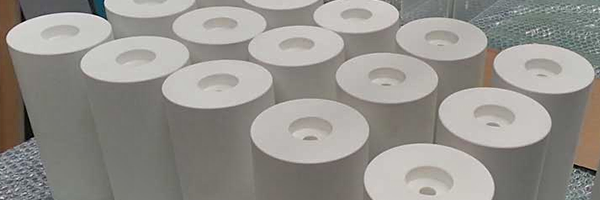The Applications and Characteristics of HDPE
February 16th, 2015
The advent of the high-density plastics era shook the twentieth-century, placing the viability of metal and wood on probation for the foreseeable future. It’s not that metal and glass and even wood aren’t still valuable commodities, but high-density plastic has several key advantages when it comes to versatility. To illustrate our point, steel alloys support the heaviest bridges and aluminium sheets provide lightweight assemblies that excel in the aeronautics industry, but high-density plastic can be tailored to serve many purposes, requiring only the restructuring of a few hydrocarbon chains to accomplish this enviable feat.
Dismantling the PE Coding Scale
Just as carbon steel and steel alloys of every description can be classed by their properties and assigned a four digit grading hierarchy, the density of the structure of a polyethylene molecule can be similarly indexed and classified. A PE prefix accompanies two digits to indicate the strength of the polymer, demonstrating the rugged qualities of the high-density plastic. For example, PE80 and PE100 are both commonly manufactured variants of polyethylene. The dual states of the plastic on show here are purpose-manufactured to possess a super-dense composition that makes the material ideal for use in water pipes, meaning both of these variants are well-known and consistently in use across the plumbing industry.
The Mechanical Properties of HDPE
The aforementioned classification standard applied to high-density polyethylene begins at 0.941g/cm3, suggesting the material is inflexible, but tensile strength and elasticity partner most efficiently within the polymer, leading to applications that go beyond pipes. Imagine giving this boring tubular form the shove, opting instead for 96″ x 240″ sheets of the abrasion-resistant plastic. The material is like raw clay, at least metaphorically, providing a blank slate that’s processed within monolithic extrusion machinery, a line of heavy-duty factory tools that take advantage of the thermoplastic’s ductile characteristics. The dense sheets are melted and shaped, cut and fusion-welded, resulting in the desired form and the characteristics that make HDPE popular within every industry.
The Ultimate in Versatile Plastics
New polymers and alloys are introduced all the time, but none of these innovative materials has penetrated every sector of industry and domestic life in the way that polyethylene has. The high-density derivation of the material, HDPE, offers a high coefficient of thermal expansion, an end to the corrosive hang-ups that eat away at costly alloys, and a low modulus of elasticity that can be manipulated to withstand impressive pressures. These characteristics make HDPE the perfect solution when looking for piping that can carry pressurized and heated fluids, but a quick review of the PE grading guide sends us down other avenues of polymer production and application. The domesticity of trash bags and water bottles compete with solutions designed for heavy industry, the HDPE resins that line mining bins and the rugged products that won’t succumb to crack propagation.
Get in touch with Industrial Plastic Solutions
Mobile: 0400967210
Phone: (03) 9798 1153
Fax No: (03) 9798 1915
Email:
ipssolutions@bigpond.com
Address:
Factory-20, 29-39 Kirkham Road West, Keysborough VIC-3173
Business Hours:
Monday – Thursday 8.30am to 4.30pm
Friday 8.30am to 3.30pm
Saturdays by appointment only.
Optimized by NetwizardSEO.com.au







